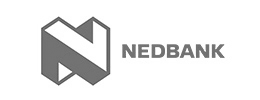The Role of Automated Reconciliation in Banks’ Digital Transformation
Digital transformation for banks is crucial to retain customers and achieve loyalty in a highly competitive market bustling with new players and features. Ideally, this would mean that every single step of the customer journey from opening a bank account to day-to-day operations, credit applications, paying bills, etc. can be done online, without a physical presence in a bank’s branch.
To ensure customers’ smooth digital journey, traditional banks need to re-assess and redefine their operating models. This process is accelerated by the global pandemic which is transforming customer behavior and habits all over the globe. At the same time, financial services markets are disrupted by fintech companies successfully stepping in niche areas like payments, loans, and personal finance.
A Statista survey in Great Britain shows that in 2019, 73% of the respondent were using online banking regularly, most of them on their smartphones. Similarly in 2018, about 61% of Americans used digital banking, which is set to rise to 65.3% by 2022.
The so-called neobanks, which operate exclusively online and don’t have physical branches, are targeting these customers, as well as the unbanked population. They gain positions because of the convenience of use, lowers costs and additional features such as spending trackers and added value through third party products (insurances, investments).
Apart from the digital disruptors’ challenges, traditional banks are facing some major obstacles on their way to digitalization. Business transformation and optimization projects are struggling with legacy infrastructure, tightened security/compliance regulations and data privacy concerns. The adoption of modern core systems requires huge IT budgets and complex migration projects. Reorganization of branch networks and back-office operations is also challenging as it comes with changes in the workforce and often copes with employees’ resistance to innovations.
The transformation and automation of financial processes are usually part of this bigger effort. For the reconciliation area, this means a high-volume transactional environment and process complexity. The deployment of an automated reconciliation solution, however, does not have to mean a heavy implementation and involvement of technology-based resources.
ReconArt’s experience from a number of deployments in the banking industry outlines several major challenges. Reconciliation processes are segmented and spread across departments with fragments in Accounting, Finance, Operations, IT, Risk and Compliance. Subsequently the approaches followed vary from manual reconciliation in Excel spreadsheets to usage of some in-house developed tools. For the accounting teams, this means additional pressure on balance sheet reporting and period-end close.
Another layer of complexity is added by the high transactional volumes, various systems/data sources and multiple business processes involved. Dealing with data sources in different formats requires the involvement of technical resources to process any changes/add new file formats. In the end this extends the time necessary for the implementation of new reconciliation processes.
ReconArt’s deployment in banks offers:
• A centralized reconciliation repository for all types of reconciliations in one platform
• Enterprise scalable architecture to handle from hundreds or thousands to millions of transactions daily
• An integrated Scheduler to automate all tasks
• Both cloud and on-premise options for deployment
• Highly intuitive 100% web-based user interface that is easy to learn and navigate
The transition from manual/semi-manual reconciliations to one single platform that integrates daily reconciliations and month-end close workflows is an important part of the digitalization of banks’ financial systems. Automation capacities allow financial teams to focus on reconciliation results and exception management, rather than the matching process itself. On top of streamlining the reconciliation, such a solution adds control points and auditability. The data processed through the reconciliation system can also be used for analytics based on actual data, thus allowing faster and more precise decisions and strategy adjustments.
Today everyone expects the same high level of digital experience in banking as in any other sphere of life. However, this is still a hard benchmark for banks to achieve. Automated reconciliation can contribute a lot to a smoother transformation of financial processes in banks, thus becoming a factor for profound improvements in customer service delivery.

 follow our blog
follow our blog






















 Quick response
Quick response

